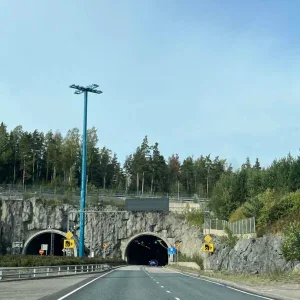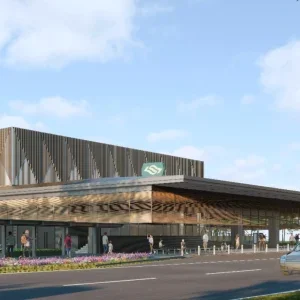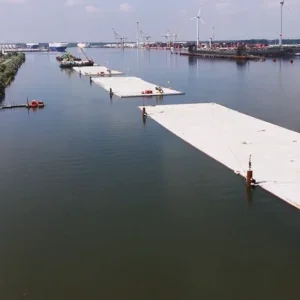Construction of the Kowloon-Canton Railway Corporation’s (KCRC) US$1.06bn Kowloon southern link is scheduled to start in late 2004, after it finalised the tunnelling methods on the 3.65km long line that will link KCRC’s East and West Rail networks.
In a paper given to local legislators, KCRC said the twin tube tunnels would be constructed using TBM, drill and blast and cut and cover techniques under a series of design and build contracts. KCRC said the work would be split into four sections that would be built simultaneously.
Starting from the northern section that begins at Nam Cheong Street station, about 1km of cut and cover tunnel will be built southwards close to a ventilation building at Yau Ma Tei. KCRC said cut and cover had been chosen because of constraints imposed over and around the alignment by existing buildings and utilities. From there, a short section of tunnel will be built under Cherry Street using tightly controlled drill and blast methods to minimise explosive vibration.
Section two, a 950m long stretch from the ventilation building south to the planned West Kowloon station, will be constructed either by cut and cover methods or by TBM, although cut and cover is preferred by KCRC. West Kowloon station itself would be built using cut and cover techniques.
TBMs would be used to build most of the 1.2km long section three that will run from West Kowloon station down Canton Road to the former Marine Police headquarters at Tsim Sha Tsui. To ensure ground stability, about 300m of tunnel will be grouted along Canton Road because of the “close proximity of the two railway tunnels to one another”.
Drill and blast would be used to tunnel under the old police base. As a result of the close proximity of the tracks and further physical constraints along the alignment, cut and cover methods would again be used for the final 450m long section. This will run from the marine police station, via Salisbury Road, to the project boundary at Tsim Sha Tsui East station.
KCRC said three shafts will be excavated using cut and cover techniques. The first, near 1 Peking Road, will provide access to recover the TBMs under Canton Road following completion of the southbound drive. The second at Silvercord will provide a ventilation shaft during construction while the third, outside Gateway Towers, will act as a permanent tunnel ventilation shaft.
Completion of the connecting underground railway line is scheduled for 2009.







